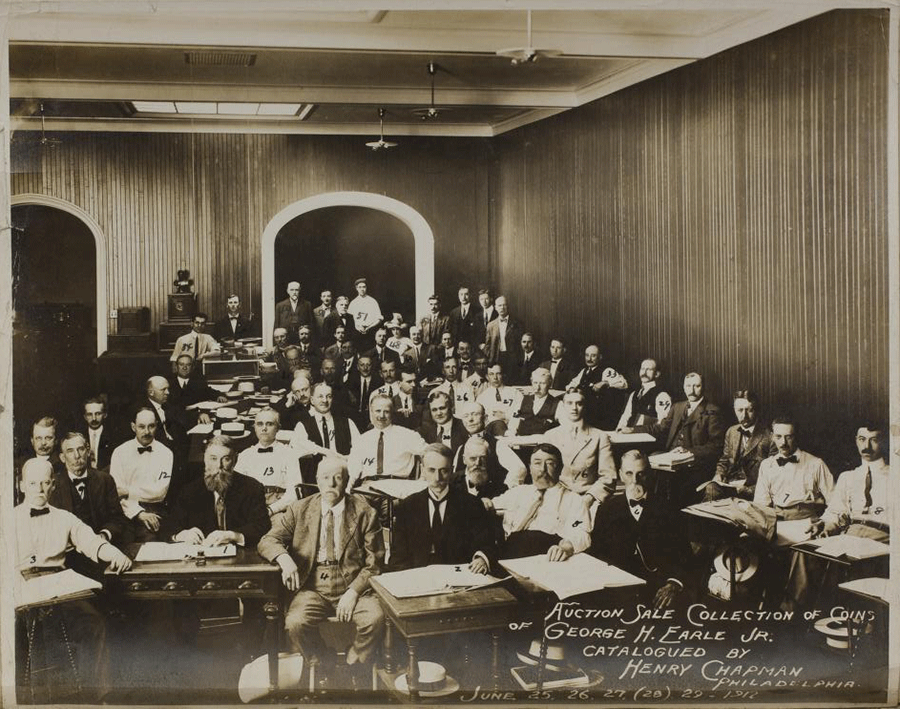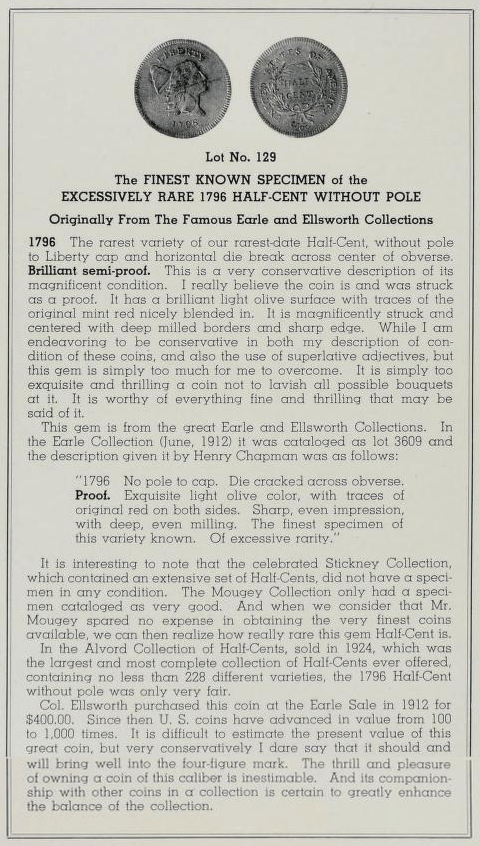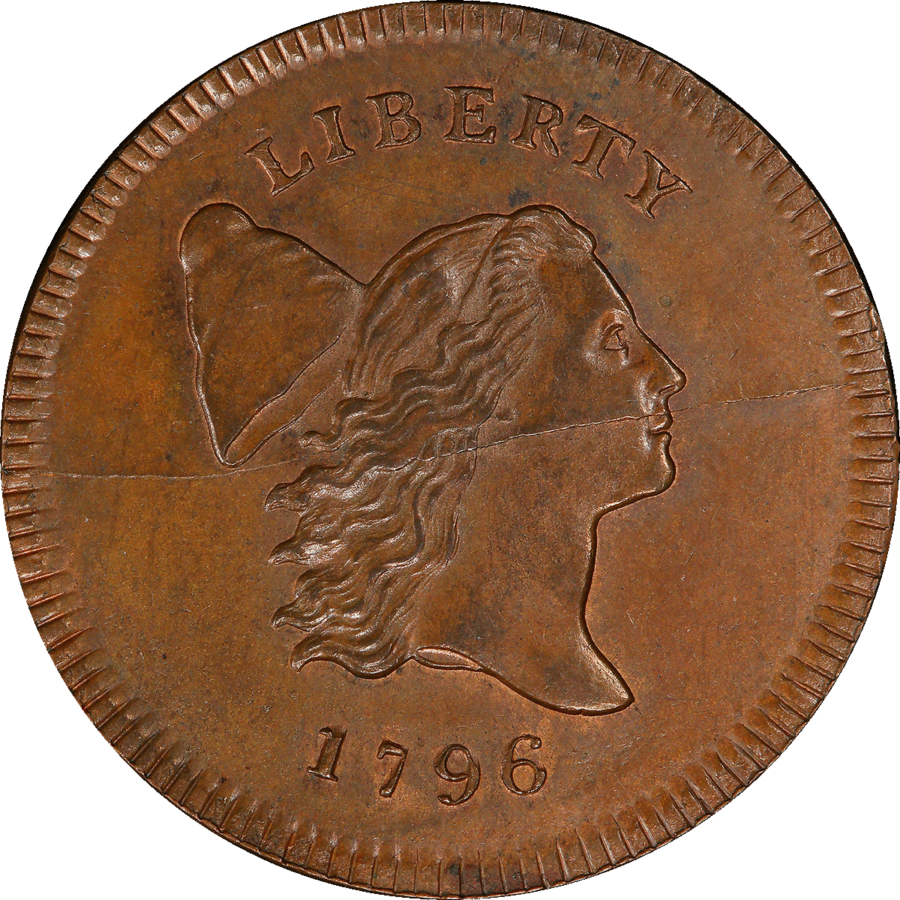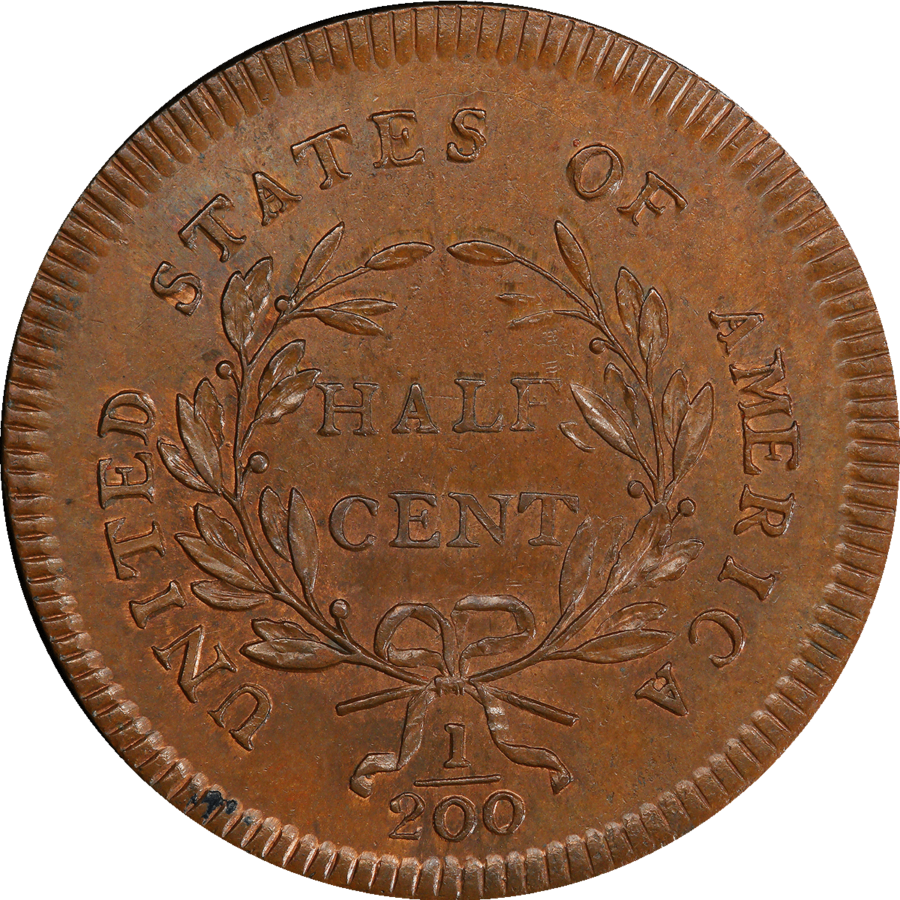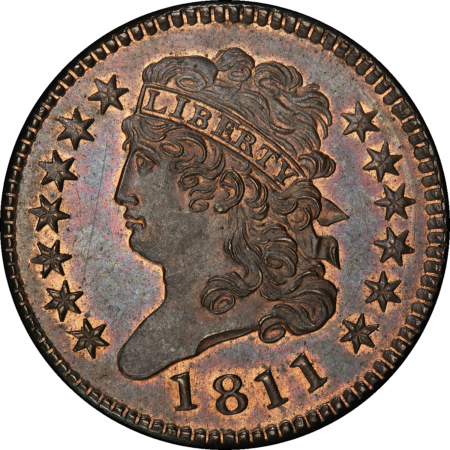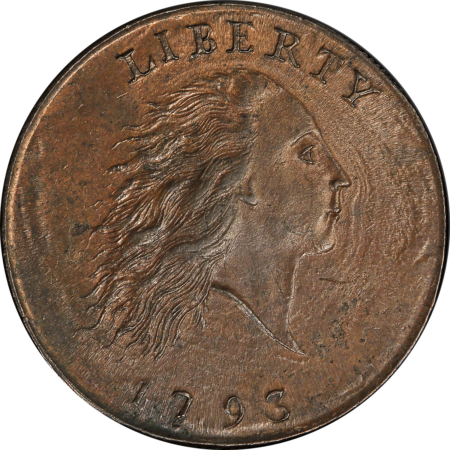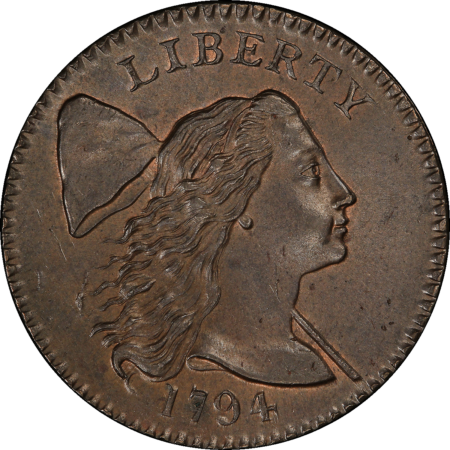"THE ULTIMATE HALF CENT"
Breen 1, Cohen 1 (Dies 1-A, Rolled Stock) : No Pole from cap. Two heavy, obverse die cracks extending from the edges left and right nearly meet at the center. Walter Breen gave this die pair an ‘a’ suffix, despite the fact that all known examples are struck on rolled copper stock, and none on cut-down spoiled cents.
Weight standards for the two copper denominations were lowered near the end of 1795, reducing the weight of cents to 168 grains, and half cents to 84 grains, from the previous 208 and 104 grain standards. New, lighter weight cents were struck beginning December 28, 1795 using the Sheldon 76 die pair, resulting in designations Sheldon 76A for those struck on the previous heavier, lettered edge planchets, and 76B struck on the new lighter, plain edge planchets. Production of lighter weight half cents followed beginning in January 1796, but from 1795 dated dies and from planchets mostly cut from rolled scrap, ‘spoiled’ cents, and Talbot, Allum & Lee tokens. The small number of half cents dated 1796 was not struck until late in the year, with all known from rolled copper stock.
Described as “the finest known specimen of the rarest half cent” by Louis Eliasberg, “one of the great copper coins of all-time” by PCGS Founder David Hall, and the “ultimate example of the ultimate half cent” by John Kraljevich cataloguing this lot in Pogue III, the Earle – Atwater – Eliasberg – Pogue 1796 No Pole is clearly the finest known example of the most important issue of the half cent denomination.
The most current census of 1796 No Pole Half Cents stands at 26 positively identified specimens per Michael Spurlock’s report of March 2012 (Penny-Wise, April 2012, Issue 268, page 77). However, most of these are well worn with significant problems, as descriptions including “not particularly attractive”, “heavily pitted”, “rather rough”, and “unpleasing” are typical.
This reddish-brown Superb Gem certified MS67RB by PCGS is clearly the finest known, and the only 1796 No Pole Half Cent exhibiting any remaining ‘Mint red’. The color has been consistently described for over a century as light olive to golden brown with traces of original mint red, and the only significant post-striking impairments are the few hairline thin scratches in the obverse field below IBE of LIBERTY.
Next is the Newcomb – Showers – Missouri coin certified MS65BN by PCGS, sold last in Ira & Larry Goldberg’s January 2014 sale of the Missouri Cabinet, lot 36 at $891,250 to the ‘High Desert’ Collection, described by Walter Breen as “Prooflike surfaces, with beautiful walnut and olive shades”. Jim McGuigan’s PCGS MS63BN follows, formerly in the collection of Virgil Brand. The Condition Census drops sharply on its way to number four, as the next best is no better than Fine with a few small problems, followed by a motley group of low grades and uglies, all of which remain in high demand due to the extreme rarity of 1796 No Pole Half Cents.
It is easy for us to dismiss those coin descriptions filled with superlatives, even for a coin such as this one. In his 1946 catalogue of the Atwater sale, B. Max Mehl is almost apologetic in his description:
“While I am endeavoring to be conservative in both my description of condition of these coins, and also the use of superlative adjectives, but this gem is simply too much for me to overcome. It is simply too exquisite and thrilling a coin not to lavish all possible bouquets at it. It is worthy of everything fine and thrilling that may be said of it.”
PCGS #04498526
Provenance
George H. Earle, Jr.; Henry Chapman ‘George H. Earle, Jr., Esq.’, June 1912, lot 3609 at $400 as “Proof. Of exquisite light olive color, with traces of original red on both sides.”; Col. James W. Ellsworth; William Cutler Atwater; B. Max Mehl ‘William Cutler Atwater’, June 1946, lot 129 @ $1,125 as “Brilliant semi-proof”; Louis E. Eliasberg, Sr.; Bowers and Merena May 1996, lot 407 @ $506K to Greg Roberts (Spectrum); Warren Trepp; Paul Nugget (Spectrum) privately, December 2002 to Brent Pogue; Pogue Family Collection; Stack’s Bowers ‘D. Brent Pouge, Part III’, February 2016, lot 3008 @ $763,750 to Oliver Jung; ‘The Type Set’ by Oliver and Lish Jung.
